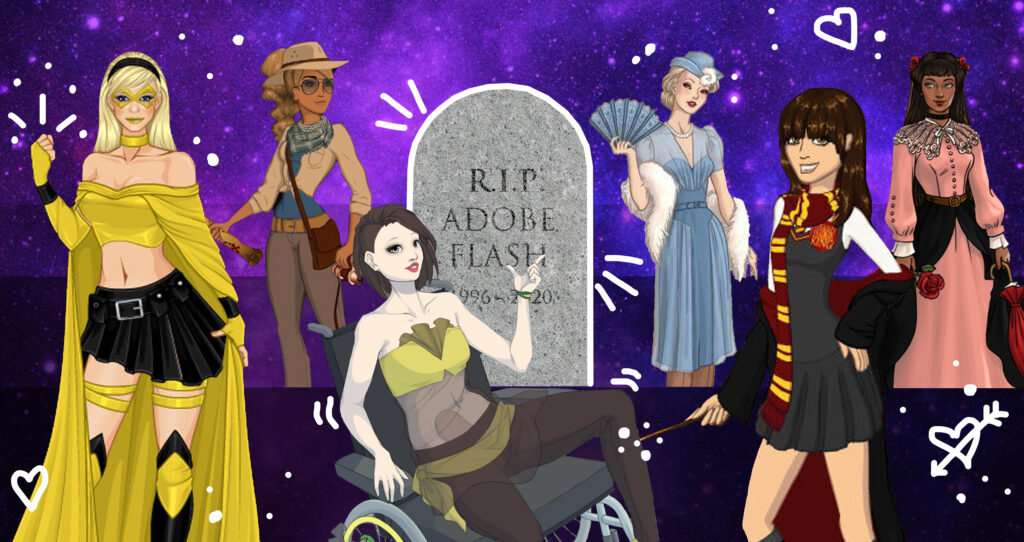
Since the 1810 sale of S&J Fuller’s first manufactured paper doll, children and adults alike have loved these two-dimensional toys. Whether paper dolls are detailed depictions of characters like S&J Fuller’s “Little Fanny” or simply blank slates for the player to style, they have always been fun for anyone with nimble fingers and a sense of fashion to project their imagination onto. Humans love to play dress-up, and it’s no surprise that our passion for paper dolls, a traditionally analog pastime, has flourished in the digital age.
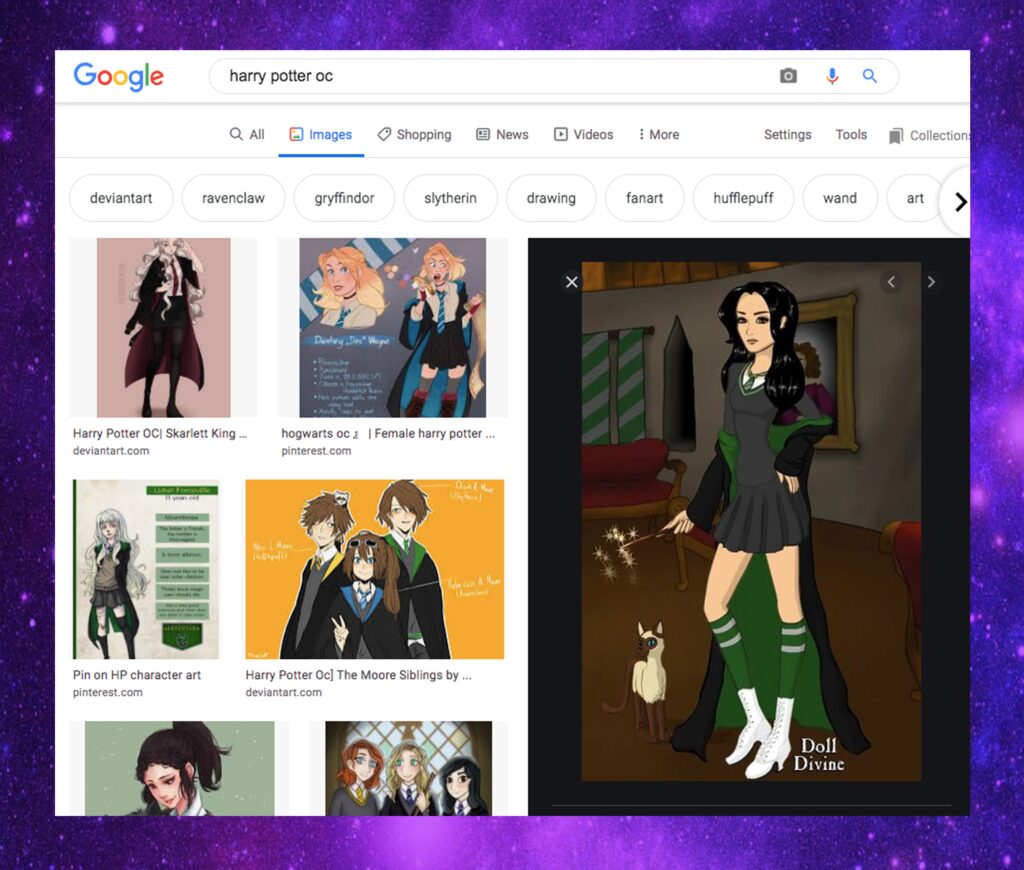
Sites like Azaleas Dolls, Doll Divine, Stardoll, Candy’s World, Dress Up Games, Missangest Games and SweetyGame (just to name a few) allow fans and fashion enthusiasts to customize these paper dolls, and their scenes, to their hearts content without the stroke of a pen or the fold of a paper tab. These games have also thrived in fandom spaces, allowing the less artistically inclined fans of everything from “Harry Potter” to “the Hunger Games” to create their own original characters or virtually “illustrate” their own scenes. It only takes a simple Google search for “Harry Potter original character” to see how intrinsic virtual dress up games are to creative fandom spaces.
Make no mistake, these games aren’t just cheap copy-and-paste jobs for internet clicks like the kind that the Apple Store seems to be laden with — they’re works of art. Exclusive games, most prolifically those on Azaleas Dolls and Doll Divine, are dense with historical and cultural references and tell stories within themselves. But with the end of Flash in December 2020, so many of these intricate games, at least for now, are lost.
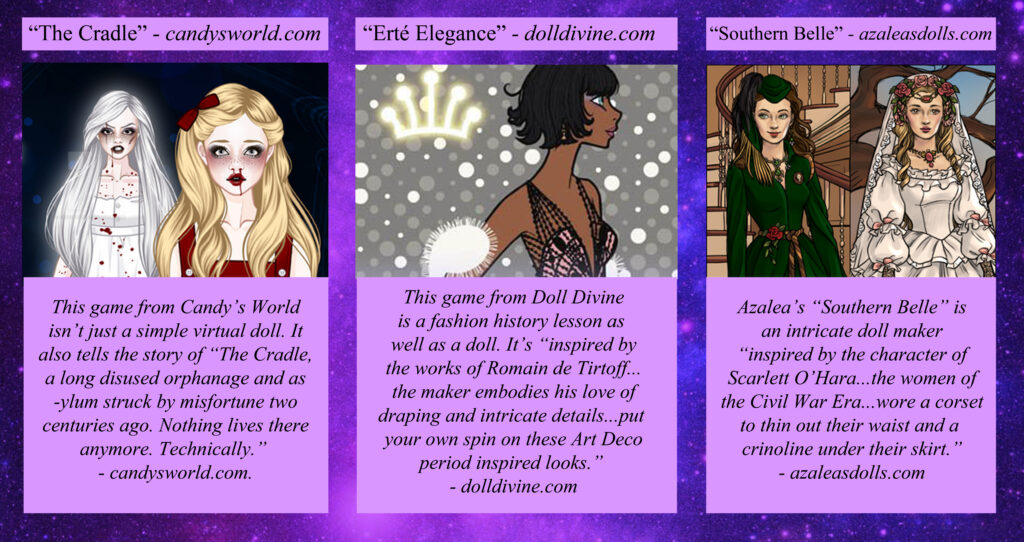
For those who aren’t keyed into the turbulent and ever-changing world of computer software, Adobe Flash was for many years an old standby — a simple and popular tool for creating games and animations — and it’s been used in everything from fanmade Youtube animatics to cable TV shows. In 2017, Adobe announced that support for the program would end on December 31, 2020.
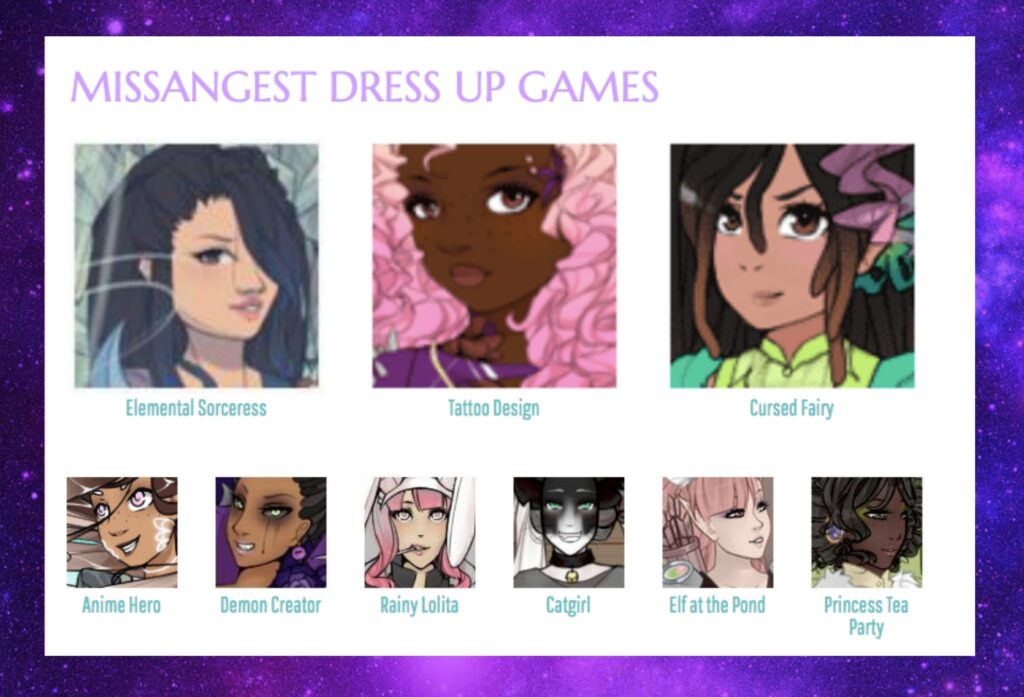
Swedish virtual paper doll artist Billie, also now known as Pastelkatto, made intricate games for Canadian artist Ola Rogula’s site, Doll Divine, under the name Missangest. She also ran her own site, Missangestgames.com. The shutdown of Flash has rendered her games on Doll Divine and Missangest unplayable, forcing her, along with many other artists in the same situation, to effectively start over from square one. They’ve got the reputation and the internet clout, but few playable games — only the ones they’ve had time to code in HTML since the news of Adobe Flash support’s imminent end.
“I still have the source files for most of my flash games,” Billie explains, “all of the graphics and everything. So my plan is to eventually convert them to HTML5. However, I will not be able to keep the drag and drop items.”
And there’s a stiff learning curve, switching from the old standby of Adobe Flash to HMTL or Unity. For Billie, drag and drop options for dress up games are much harder to incorporate into HTML-based games as opposed to games made with Flash. But like many other artists in the same position, Billie is set on remastering her Flash games, even without their former complexity.
“[Recreating] the games without drag and drop items is better than no games at all I feel, [and] I plan on adding some extra accessories to make up for it,” Billie said.
Not only has the end of Flash taken a toll on the artistic processes of virtual paper doll artists, it’s also taken a financial toll on them. With all of their Flash games lost, artists like Billie are struggling to survive as they rebuild their catalogs.
Billie is passionate about her work and insists that she “will adapt and keep going for as long as [she] can, but [she’s] currently studying programming and [needs] a proper income. If this doesn’t work out in the long run [she’s] just going to pursue something else.”
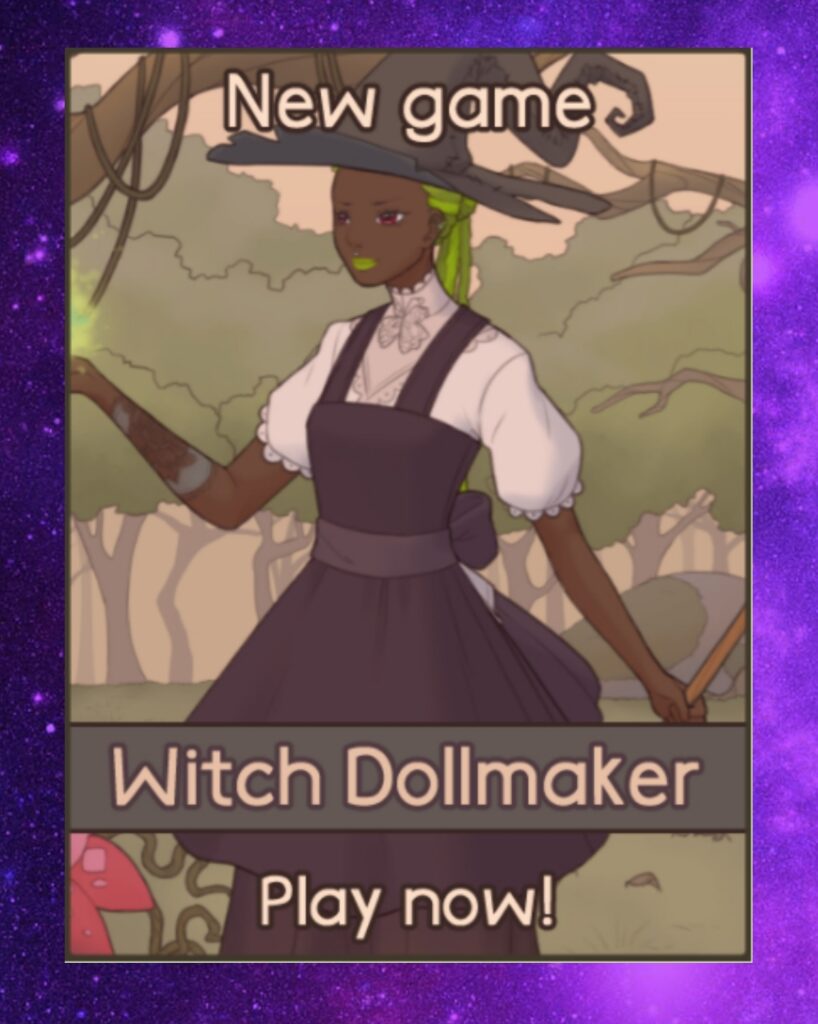
Reception of her remastered games has been rough as well. Even before there is time for new HTML game that are just as beautiful and detailed as the old Flash games to flourish, Billie reports getting “more complaints than positive feedback.”
For Billie, it is difficult to stay motivated when working with “limited knowledge and funds.” Nevertheless, she wants to stay in the industry but understands why someone would leave it.
Billie also emphasizes that keeping an eye on the numbers and ad revenues is a more accurate way to measure the reception and reach of a game than the comments section. “I try to focus on numbers and ad revenues to measure how the games are doing more than written feedback,” she says.
Small artists like Billie also face competition from more established HTML-based sites with larger game catalogs, in part because they are publicly sourced. Anyone can create and submit a game to sites like Picrew.me and Meiker.io (a new project from Ola Rogula), although that does mean the quality is less consistent than that of games from the sites of individual artists.
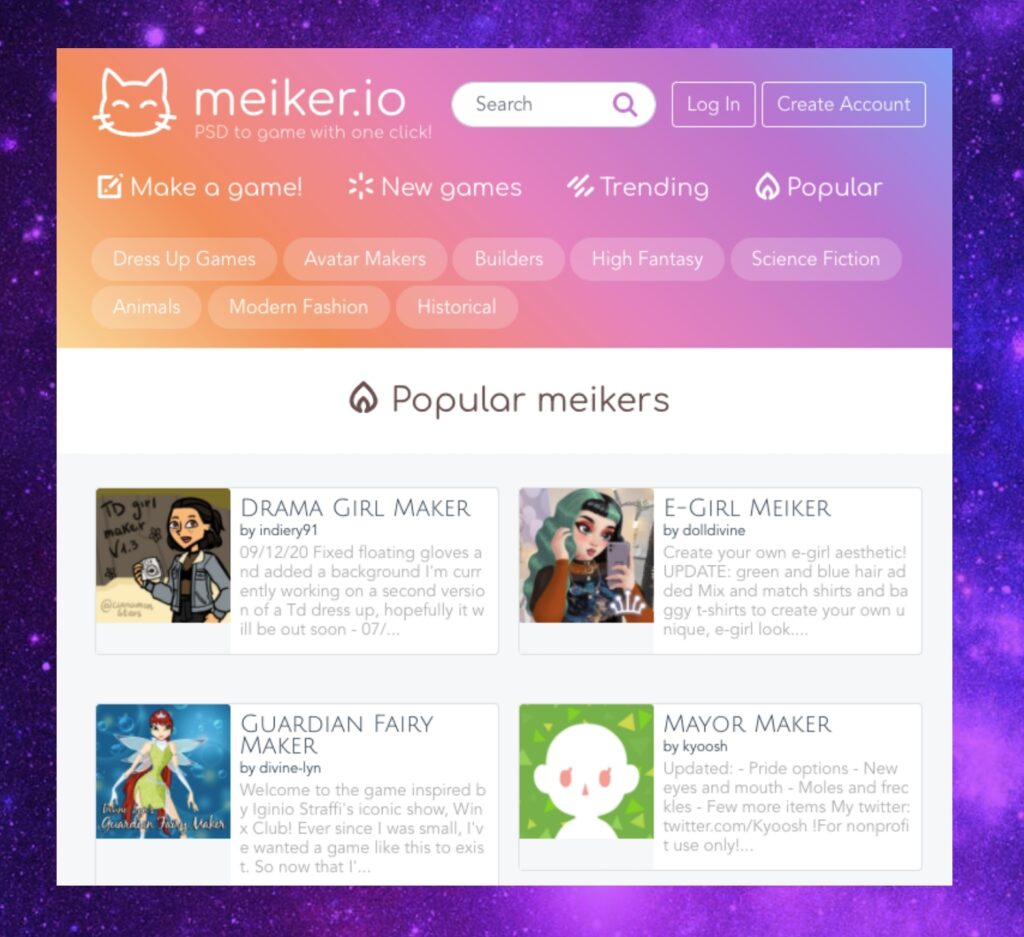
This doesn’t concern Billie though, who just wants to see the genre flourish, no matter how: “I’m hopeful that this genre can survive the end of flash and more people will adapt. I welcome Picrew and Meiker — when I get questions about people who are interested in making their own games, I always recommend Meiker to them, it’s a great tool and website — anything to keep this genre going!”
Virtual paper dolls have held a revered place in the Flash-era Internet. And as a fangirl who spent my childhood creating my own Pixie Hollow characters on Azaleas Dolls and who now spends my adulthood marveling at the intricate historical games on Meiker, it is my sincerest hope that despite the demise of Flash, this genre will continue to thrive.
